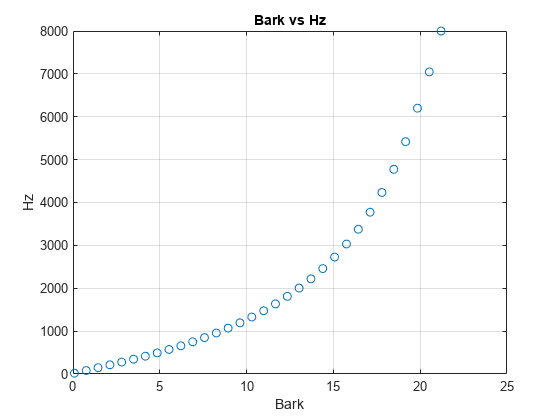bark2hz
Convert from Bark scale to hertz
Syntax
Description
Examples
Input Arguments
Output Arguments
Algorithms
The frequency conversion from the Bark scale to Hz uses the following formula:
The Bark value correction occurs before the conversion from the Bark scale to Hz.
References
[1] Traunmüller, Hartmut. "Analytical Expressions for the Tonotopic Sensory Scale." Journal of the Acoustical Society of America. Vol. 88, Issue 1, 1990, pp. 97–100.
Extended Capabilities
Version History
Introduced in R2019a
